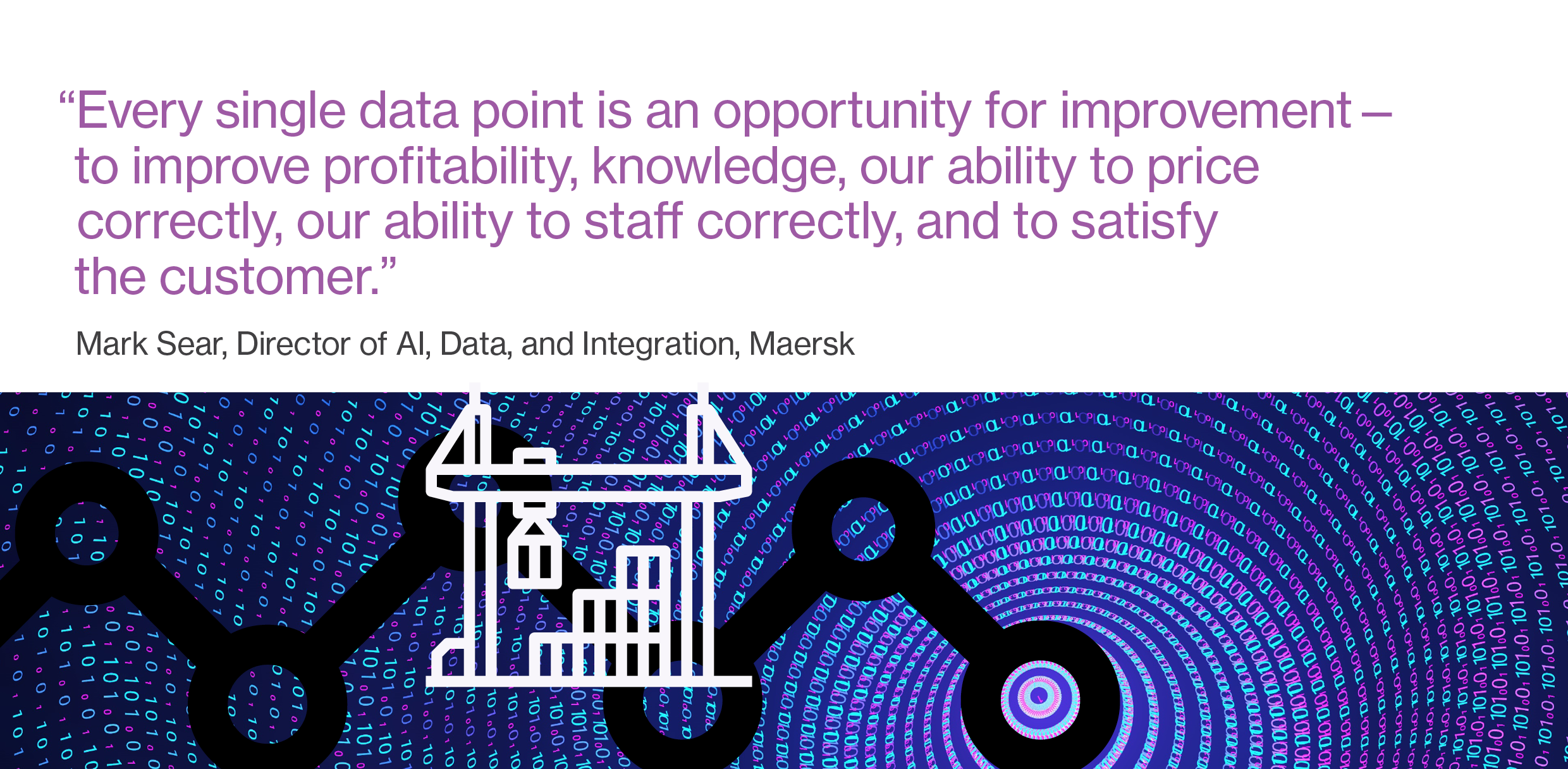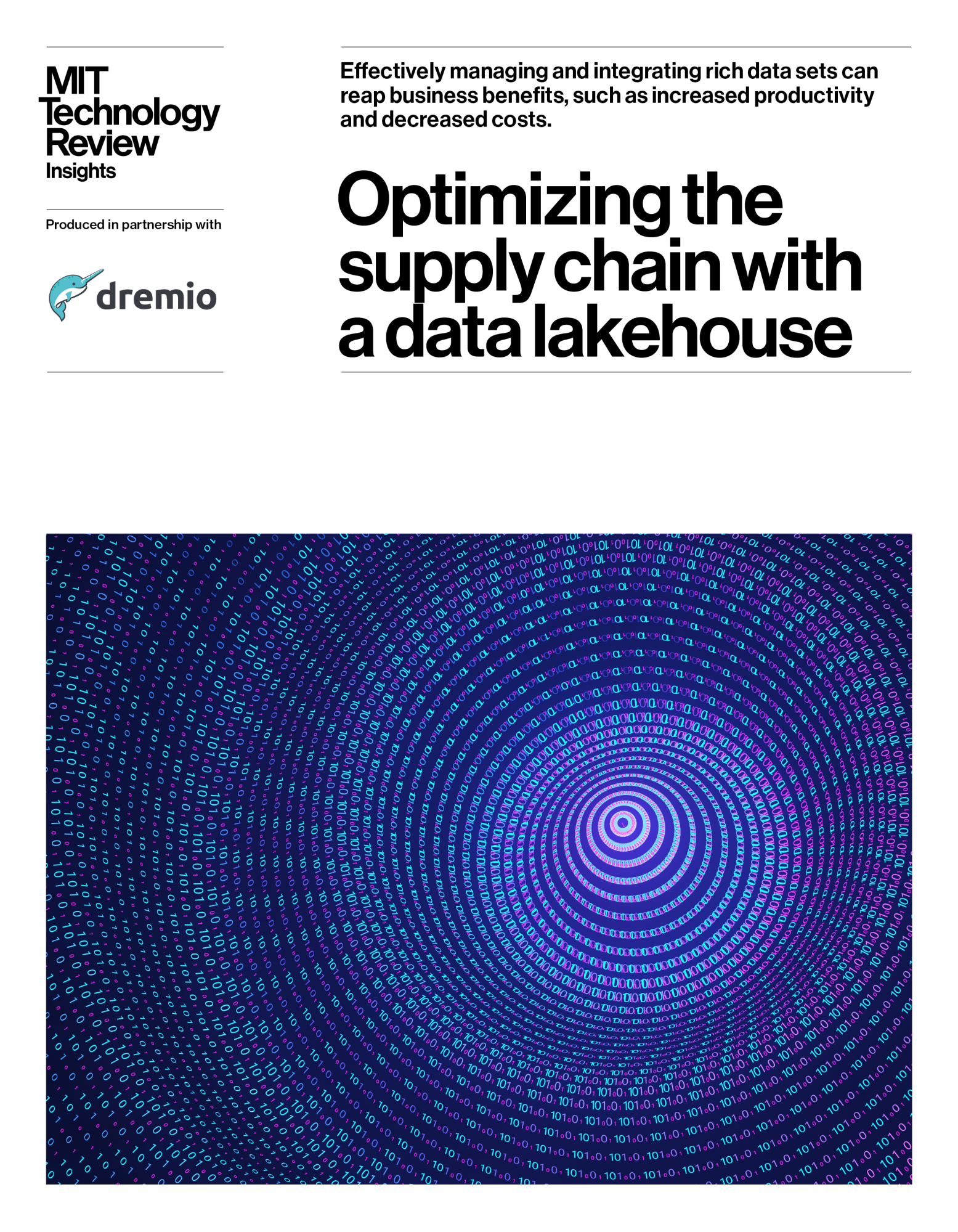When a business ship travels from the port of Ras Tanura in Saudi Arabia to Tokyo Bay, it’s not solely carrying cargo; it’s additionally transporting hundreds of thousands of information factors throughout a wide selection of companions and complicated expertise programs.
Take into account, for instance, Maersk. The worldwide delivery container and logistics firm has greater than 100,000 workers, places of work in 120 international locations, and operates about 800 container ships that may every maintain 18,000 tractor-trailer containers. From manufacture to supply, the gadgets inside these containers carry a whole bunch or hundreds of information factors, highlighting the quantity of provide chain knowledge organizations handle each day.
Till not too long ago, entry to the majority of an organizations’ provide chain knowledge has been restricted to specialists, distributed throughout myriad knowledge programs. Constrained by conventional knowledge warehouse limitations, sustaining the information requires appreciable engineering effort; heavy oversight, and substantial monetary dedication. Right now, an enormous quantity of information—generated by an more and more digital provide chain—languishes in knowledge lakes with out ever being made obtainable to the enterprise.

A 2023 Boston Consulting Group survey notes that 56% of managers say though funding in modernizing knowledge architectures continues, managing knowledge working prices stays a serious ache level. The consultancy additionally expects knowledge deluge points are more likely to worsen as the quantity of information generated grows at a fee of 21% from 2021 to 2024, to 149 zettabytes globally.
“Knowledge is in every single place,” says Mark Sear, director of AI, knowledge, and integration at Maersk. “Simply think about the lifetime of a product and what goes into transporting a pc mouse from China to the UK. It’s a must to work out the way you get it from the manufacturing facility to the port, the port to the subsequent port, the port to the warehouse, and the warehouse to the patron. There are huge quantities of information factors all through that journey.”
Sear says organizations that handle to combine these wealthy units of information are poised to reap invaluable enterprise advantages. “Each single knowledge level is a chance for enchancment—to enhance profitability, data, our skill to cost appropriately, our skill to workers appropriately, and to fulfill the client,” he says.
Organizations like Maersk are more and more turning to a knowledge lakehouse structure. By combining the cost-effective scale of an information lake with the aptitude and efficiency of an information warehouse, an information lakehouse guarantees to assist corporations unify disparate provide chain knowledge and supply a bigger group of customers with entry to knowledge, together with structured, semi-structured, and unstructured knowledge. Constructing analytics on prime of the lakehouse not solely permits this new architectural method to advance provide chain effectivity with higher efficiency and governance, however it might additionally help straightforward and fast knowledge evaluation and assist cut back operational prices.
This content material was produced by Insights, the customized content material arm of MIT Expertise Evaluation. It was not written by MIT Expertise Evaluation’s editorial workers.

